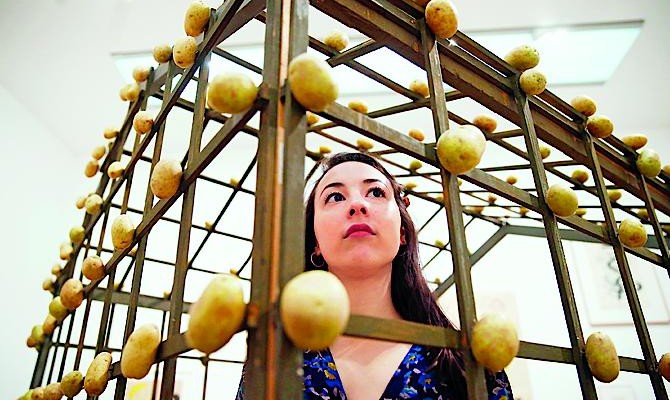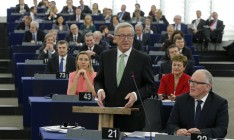Economy
TradeThe European Parliament extended trade preferences to Ukraine

Yesterday, the European Parliament has prolonged the duty-free access to the EU market for Ukraine’s exports, which has been in effect since April 23, 2014, until the end of 2015. «This is the result of the request of Ukraine in exchange for the obligations of Russia to extend the preferential regime within the framework of the free trade zone of the CIS between Russia and Ukraine,» reads the explanatory note to the report of Gabrielius Landsbergis of the Lithuanian Group of the European People’s Party.
Severance pay
On September 12 EU Commissioner for Trade Karel de Gucht, Ukrainian Minister of Foreign Affairs Pavlo Klimkin and Russian Minister of Economic Development Aleksei Ulyukaev signed in Brussels a joint statement, according to which the EU and Ukraine agreed to postpone until January 1, 2016 the bilateral implementation of the trade part of the Association Agreement. Seeing as the European Parliament approved the extension of preferences, now the Council of Europe must do the same. It is presumed that the extension of the liberal trade regime will take effect starting November 2, the day after the trade regime introduced on April 23 expires.
Over eight months the volume of export of Ukrainian products to 28 EU member countries grew 13% to US $12.2 bn compared to the same period last year, while Ukraine’s global export indicator fell 6.8%. Moreover, in the period May-August when autonomous preferences were in effect export grew by 20% to US $5.6 bn. Over the period of unilateral liberalization of trade Portugal, Latvia, Spain, the UK and Belgium increased their purchase of Ukrainian products.
Meanwhile, Italy, Poland and Spain made the greatest monetary contributions among European countries to the increase in Ukrainian export to the EU. These three countries contributed to nearly half the growth in the export of Ukrainian products to the EU, amounting to US $940.1 mn over fourth months that the preferences were in effect.
Vegetable proteins
As expected, mainly exporters of horticultural products benefit from the duty-free access to European markets. According to data of the ProAgro company, as of September 1 around 85% the quotas on duty-free import of three grades of Ukrainian grains to the EU to the tune of 1.6 mn t up until November 1 have been used. In particular, the quotas on the delivery of corn, the sale of which to Europe is six times higher than the quota volume, have been exhausted. The same applies to wheat.
The only grain crop for which quotas are still accessible is barley. The quotas for its delivery are distributed by only 8%. As the company explains, the demand for Ukrainian barley in the EU depends on the situation seeing as Europe is also a major exporter of this crop. And now barley of the latest harvest grown in Europe has appeared on European markets. However, the use of import quotas by licenses for other commodities — mainly in the animal husbandry sector — as earlier leaves a lot to be desired. Up to the beginning of autumn only two of 27 quotas were used 100% — for fruit juices and honey. Also, domestic exporters began actively using the quotas on the delivery of cereals (35% of the quota was used), hops (28%), products made from processed tomatoes (14%) and cuts (8%). However, 2% of the remaining 21 quotas were used even less.
Notwithstanding that the quotas on delivery of grains for Ukraine are rather low and the quotas on other products are not in high demand, Brussels does not plan to change them. As Head of the EC Representative Office in Ukraine Jan Tombinski said during talks of the Ukrainian-Lithuanian Business Council in Kyiv held on Thursday, the volume of trade quotas for Ukrainian agricultural products will remain the same to the end of 2015.






 of the agreement of syndication with Financial Times Limited are strictly prohibited. Use of materials which refers to France-Presse, Reuters, Interfax-Ukraine, Ukrainian News, UNIAN agencies is strictly prohibited. Materials marked
of the agreement of syndication with Financial Times Limited are strictly prohibited. Use of materials which refers to France-Presse, Reuters, Interfax-Ukraine, Ukrainian News, UNIAN agencies is strictly prohibited. Materials marked  are published as advertisements.
are published as advertisements.